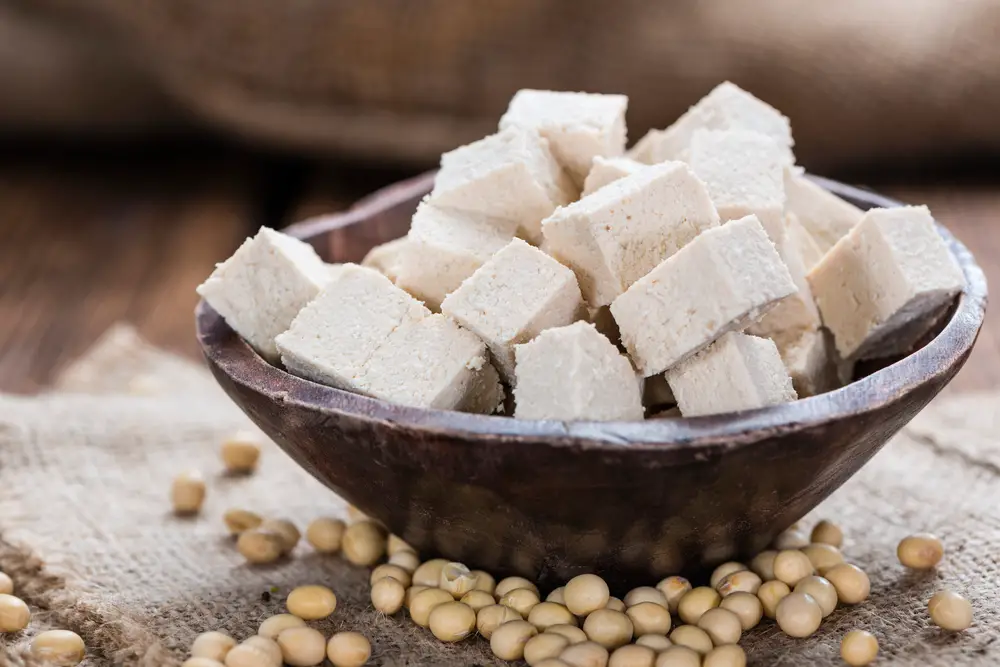Tofu, a staple protein source in many vegan diets, has found its place in various dishes ranging from stir-fries to desserts. Its versatility and nutritional benefits have made it a favorite among those following a plant-based lifestyle. As you explore different food options, you might wonder about tofu’s compatibility with a gluten-free diet, especially if you have sensitivities to gluten or celiac disease.
Understanding what goes into making tofu is crucial for determining whether it can fit into a gluten-free diet. Traditionally, tofu is made from soybeans, water, and a coagulant to help it set. These ingredients themselves are naturally gluten-free. However, the concern for gluten content often comes into play during the processing phase or through cross-contamination, especially when tofu is prepared or flavored with additives that may contain gluten.
Choosing the right tofu means reading labels carefully and being aware of different brands’ manufacturing practices. When preparing tofu at home, it is equally essential to use gluten-free seasonings and prevent cross-contamination with gluten-containing foods. Keep these tips in mind, and you can confidently incorporate tofu into your gluten-free diet, enjoying its health benefits and versatility without worry.
Key Takeaways
- Tofu is generally gluten-free, made from soybeans, water, and a coagulant.
- Be mindful of cross-contamination and check for gluten-containing additives when buying tofu.
- Safely enjoy tofu on a gluten-free diet by choosing the right brands and using gluten-free seasonings when cooking at home.
Understanding Tofu and Its Origins
Before diving into the world of tofu, it’s essential to grasp what it is and how it closely connects to soybeans, a staple in vegetarian and vegan diets for its protein content.
What Is Tofu?
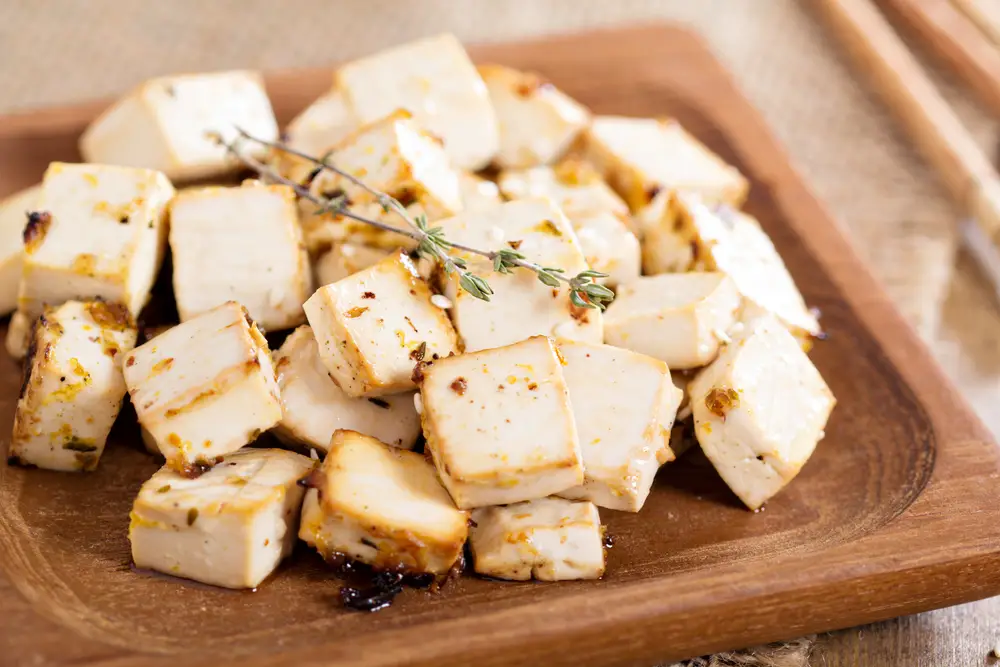 Tofu, or bean curd, is a versatile food made by coagulating soy milk, similar to cheesemaking. Due to its ability to absorb flavors and high protein content, tofu is a beloved ingredient in many vegetarian and vegan meals. It is also naturally gluten-free, making it a safe choice if you have gluten sensitivities or celiac disease.
Tofu, or bean curd, is a versatile food made by coagulating soy milk, similar to cheesemaking. Due to its ability to absorb flavors and high protein content, tofu is a beloved ingredient in many vegetarian and vegan meals. It is also naturally gluten-free, making it a safe choice if you have gluten sensitivities or celiac disease.
Key Takeaway: Tofu is a dense, protein-rich food crafted from soy milk and excellent for gluten-free people.
Tofu’s Relation to Soybeans
Tofu is made from soybeans, which are legumes native to East Asia. Organically grown soybeans are often sought after for tofu production to ensure the absence of genetically modified organisms (GMOs) and pesticides. As a vegan, you’ll appreciate that soybeans provide a complete protein source, meaning they contain all the essential amino acids your body needs.
- Complete protein: Essential for muscle growth and repair.
- Vegan-friendly: Soybeans make tofu suitable for any plant-based diet.
- Sustainable: Cultivating soy uses less water and land than animal protein sources.
Key Takeaway: Tofu originates from soybeans, offering a complete protein and an environmentally friendly meal option.
Types of Tofu and Their Textures
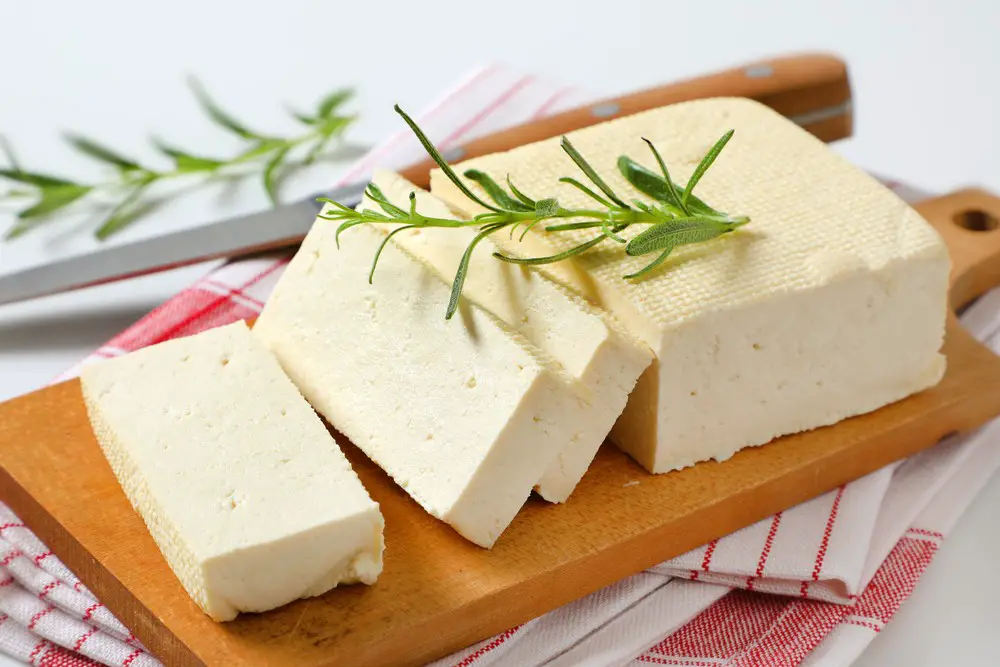 Tofu comes in a range of textures from pillowy soft to impressively firm, each suited to different culinary uses. You’ll find that the texture significantly affects the outcome of your dish, so it’s vital to choose the right type.
Tofu comes in a range of textures from pillowy soft to impressively firm, each suited to different culinary uses. You’ll find that the texture significantly affects the outcome of your dish, so it’s vital to choose the right type.
From Silken to Extra Firm
Silken tofu: This type is the softest available, with a creamy and custard-like texture that blends smoothly into sauces, desserts, and smoothies.
- Uses: Perfect for creamy dressings, vegan desserts, and smoothies.
- Key Tip: Handle carefully; its delicate nature can break apart easily.
Soft tofu: Not quite as delicate as silken, but still tender and often used in similar ways or for soft scrambles.
- Uses: Soups like miso, soft scrambles, and dips.
- Key Takeaway: It absorbs flavors well, making it ideal for marinades.
Medium tofu: A middle ground between soft and firm, with a bit more chew and body without being overly dense.
- Uses: Light stir-frying, braising, and in salads where a bit of texture is desired.
Firm tofu: Holds its shape well and can withstand frying and grilling.
- Uses: Great for hearty stir-fries, kebabs, and any dish where you want the tofu to maintain its shape.
- Key Tip: Pressing it before use will enhance its texture and ability to soak up marinades.
Extra firm tofu: The most dense and holds its shape under almost any cooking condition.
- Uses: Ideal for baking, deep-frying, and grilling for that satisfying chew.
- Key Takeaway: It’s incredibly versatile and can stand in for meat in many recipes.
Specialty Tofu Varieties
In addition to the standard types, there are special tofu varieties that offer unique textures and flavors.
Marinated tofu: Pre-flavored and saves you time in the kitchen.
- Key Takeaway: Great for when you’re in a rush but still want a tofu meal packed with flavor.
Smoked tofu: Has a smoky flavor and firmer texture.
- Uses: Adds a depth of flavor to sandwiches, salads, and charcuterie boards.
Seasoned tofu: Comes infused with herbs and spices.
- Uses: A timesaver for quick meals, just slice and serve or briefly cook to enhance the flavor.
In your journey with tofu, remember that each type brings texture and charm to dishes. Whether blended into a smooth dessert or starring in a stir-fry, the right tofu can make your culinary creation shine. Match the tofu’s consistency with your desired meal outcome for that perfect vegan dish.
Is Tofu Gluten-Free?
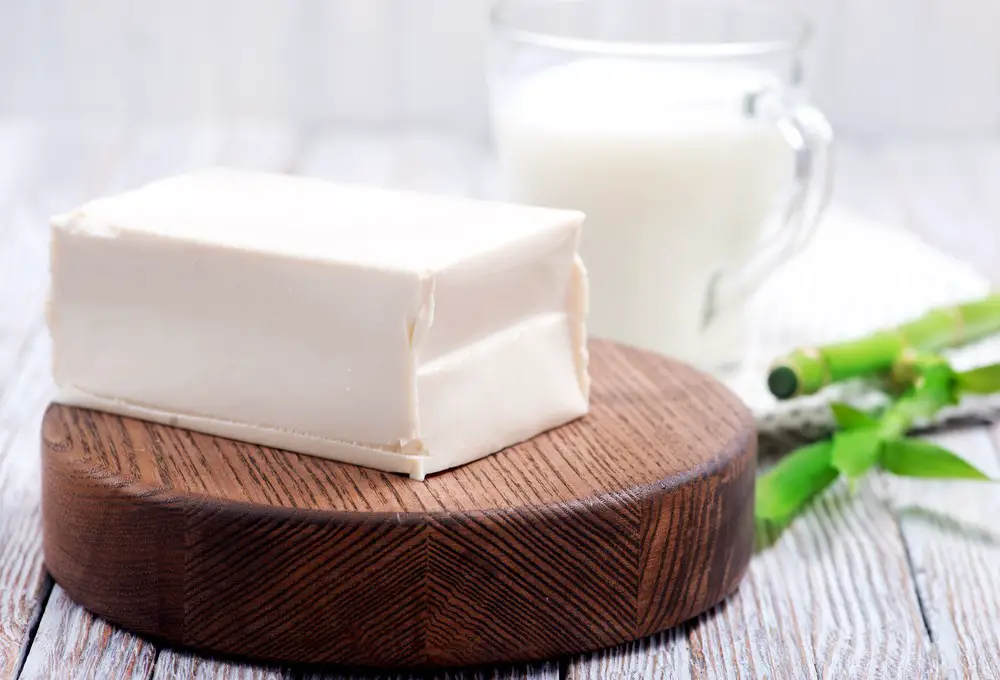 When scanning the aisles for gluten-free options, tofu is often on the list of safe foods. However, not all tofu is created equal in terms of gluten content.
When scanning the aisles for gluten-free options, tofu is often on the list of safe foods. However, not all tofu is created equal in terms of gluten content.
Uncovering Gluten in Foods
You’ll want to understand where gluten may hide to ensure your diet remains gluten-free. Gluten is a protein found in wheat, rye, and barley. For people with celiac disease or gluten sensitivity, avoiding these grains and any foods that may come in contact with them during processing is essential.
- Wheat is the most common gluten source.
- Read labels: Look for the “certified gluten-free” mark.
Tofu’s Gluten Content
Tofu is gluten-free and made from soybeans, water, and a coagulant. However, cross-contamination can occur if processed in a facility that handles gluten-containing foods.
- Plain tofu: Typically gluten-free.
- Seasoned or prepared tofu: Can contain gluten; always check the label.
Strategies for Gluten-Safe Tofu Shopping:
- Check for certification: Seek out tofu labeled “certified gluten-free.”
- Ingredient vigilance: Plain tofu should list soybeans, water, and a coagulant—nothing more.
Key takeaway: When in doubt, check the packaging for the gluten-free label, and when possible, opt for products certified gluten-free to keep your meals safe and enjoyable.
Risks of Cross-Contamination
Understanding cross-contamination risks is vital when you’re seeking gluten-free options like tofu. It ensures that your food remains safe for your gluten-free lifestyle.
Understanding Cross-Contamination
Cross-contamination occurs when gluten-free foods, like tofu, come into contact with gluten through shared surfaces, utensils, or airborne particles. This inadvertent transfer can happen at any stage from the farm to your fork.
- In the grocery store: Tofu can be exposed to gluten via shared processing equipment.
- At restaurants: The risk lies in shared kitchen spaces even if a dish is marked gluten-free.
- Through packaging: Tofu sitting next to gluten-containing products might be a no-go.
Key takeaway: Always be vigilant about the origins and journey of your tofu to ensure it stays gluten-free.
Avoiding Gluten Exposure in Tofu
You’re aiming to enjoy your tofu without the gluten hitch. Here are some strategies to minimize your risk:
- Be inquisitive: Ask about the handling and preparation methods wherever you buy or eat tofu.
- Look for labels: Certified gluten-free logos are your green light.
- Prep smart: Designate a gluten-free area to prep your tofu at home.
- Tip: For added assurance, rinse your tofu before using it.
Key takeaway: A little knowledge and a few cautious tactics can protect your plate from gluten infiltrators.
Choosing the Right Tofu Brands
When selecting tofu brands, you must ensure they align with your gluten-free and vegan lifestyle. Check for certifications and labels to guarantee the absence of gluten in your tofu.
Identifying Gluten-Free Brands
Many tofu brands now cater specifically to the gluten-free market. Nasoya and House Foods stand out as popular choices. They offer tofu products that fit perfectly into a gluten-free, vegan diet. Morinaga is another brand that prides itself on providing gluten-free tofu options.
- Nasoya Tofu: Offers a variety of certified gluten-free tofu.
- House Foods Tofu: Clearly labels their gluten-free tofu products.
- Morinaga Tofu: Known for non-GMO and gluten-free tofu offerings.
When browsing, look specifically for transparent brands about their ingredients and processing practices. This is a surefire way to protect your health and live according to your values.
Certification and Label Reading
Gluten-free certification is a reliable indicator of a safe product. The Gluten-Free Certification Organization (GFCO) is one of the most stringent certification bodies, ensuring products meet strict gluten-free standards.
When you’re inspecting the nutrition label, here are the details to focus on:
- Look for the ‘certified gluten-free’ label.
- Inspect the ingredients list for any hidden sources of gluten.
Here are a couple of tips to help you make the best choice:
- Brand Certification: Choose brands like Nasoya and House Foods that often have the GFCO certification.
- Nutrition Label: Even if a product is labeled gluten-free, scrutinize the ingredients.
Key Takeaway: Always opt for tofu with clear gluten-free labeling and preferably third-party certification to ensure you adhere to your gluten-free vegan diet effectively.
Incorporating Tofu Into Your Diet
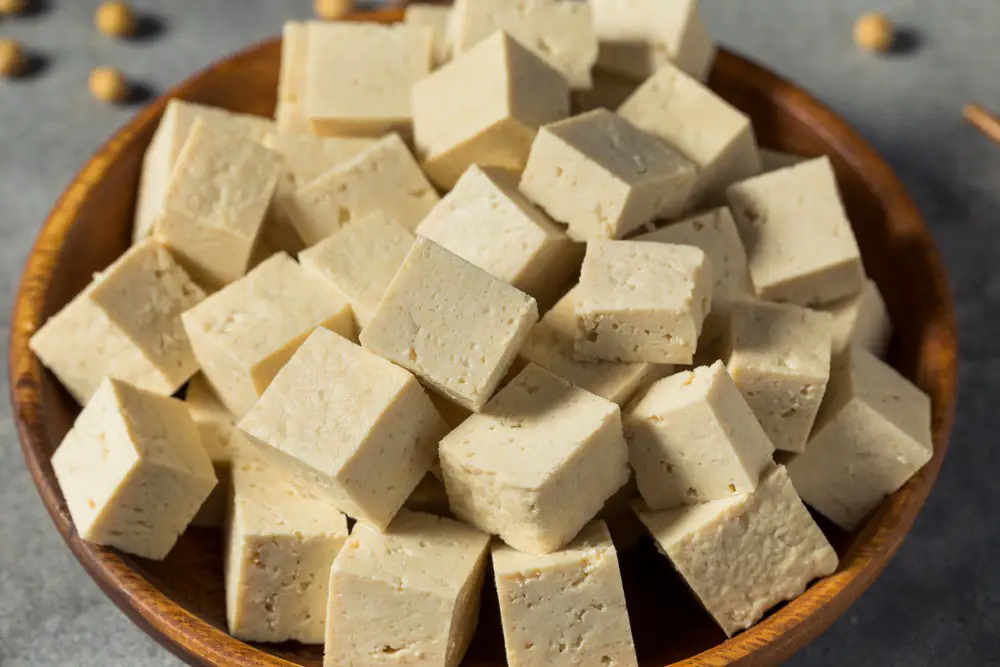 Before you begin exploring the versatility of tofu in your meals, remember that this plant-based powerhouse is more than just a meat substitute; it’s a canvas for flavor and a pillar for nutrition, packed with protein that can shine in various recipes from breakfast to dinner.
Before you begin exploring the versatility of tofu in your meals, remember that this plant-based powerhouse is more than just a meat substitute; it’s a canvas for flavor and a pillar for nutrition, packed with protein that can shine in various recipes from breakfast to dinner.
Tofu in Vegetarian and Vegan Recipes
Tofu’s neutral taste makes it an easy fit for diverse vegetarian and vegan recipes, allowing it to absorb flavors beautifully. Here are some creative ways to include tofu in your diet:
- Stir-fry: Toss cubed tofu with colorful vegetables and a savory sauce. This simple technique transforms a block of tofu into a protein-rich component of a vibrant, nutritious meal.
- Baking: Slice your tofu, marinate with your favorite herbs and spices, and bake until crispy. It’s ideal as a topping for salads or as a component of a plant-based Buddha bowl.
- Soups: Silken tofu adds creaminess without dairy to soups. Use it in vegan cream soups or miso soup for a satisfying touch.
Incorporating tofu into your meals isn’t just about the diversity of recipes; it’s about embracing a source of nutrition that supports your lifestyle.
Key takeaway: Tofu’s adaptability in recipes allows you to maintain a balanced diet without compromising on flavor or texture.
Creating Balanced Tofu-Based Meals
Crafting a meal around tofu means considering all the food groups for a well-rounded, nutritious dish. Here’s how you can create balanced meals:
- Pair tofu with whole grains like quinoa or brown rice for complex carbohydrates and fiber.
- Include a variety of raw and cooked vegetables for essential vitamins and minerals.
- Add healthy fats, such as avocado slices or a handful of nuts, to enhance the absorption of fat-soluble nutrients.
For breakfast, consider scrambling tofu with turmeric and spinach and serving it alongside whole-grain toast. Lunch might feature a tofu stir-fry packed with your favorite veggies. Come dinner, grilled tofu steaks are a satisfying centerpiece when paired with roasted vegetables.
Key takeaway: Balancing your tofu-based meals ensures you get a complete array of nutrients vital for your health.
By incorporating tofu into your daily meals with these tips, you enrich your diet with its protein content and the sheer variety of dishes that can be created, making every meal exciting and nutritionally sound.
Preparing Tofu at Home
When preparing tofu at home, the key lies in handling tofu’s delicate texture and enhancing its natural flavors. Let’s look at the best methods for cooking tofu and creating marinades that infuse it with various tastes.
Tofu Cooking Techniques
Tofu comes from soy milk thickened with minerals like calcium or magnesium salts and then pressed to release water and form solid blocks. Handling this rich source of plant-based protein involves several cooking techniques that affect its texture and taste:
- Pressing: Before cooking, press your tofu to remove excess water. This helps it absorb flavors more effectively.
- Baking: To bake tofu, preheat your oven to about 350°F. Cut tofu into slices or cubes, spread them on a baking sheet, and bake until golden brown. This method gives tofu a chewy texture.
- Pan-Frying: Heat a small amount of oil in a pan over medium heat. Add tofu and cook until all sides are crispy. This adds a delightful crunch to your dish.
- Scrambling: Crumble the tofu into a pan and sauté with your favorite spices. This is a great egg substitute for breakfast.
Here’s a tip: For a firmer texture, freeze tofu overnight and thaw before cooking.
Marinades and Flavorings
Infusing tofu with mouth-watering flavors transforms it from bland to grand. You’ll do this with marinades and flavorings that permeate the tofu:
- Marinades: Combine ingredients like soy sauce, vinegar, spices, and fat like olive oil to create a marinade. Let your pressed tofu soak in this mixture for at least 30 minutes before cooking.
- Flavorings: Enhance your tofu with herbs, garlic, ginger, citrus zest, or nutritional yeast to suit your taste.
Remember, marinated tofu not only packs a punch in the flavor department but also makes a nutritious addition to any vegan meal.
Key Takeaway: Pressing and marinating tofu are essential steps for achieving the perfect texture and flavor in your homemade tofu dishes.
Nutritional Profile of Tofu
Tofu is a versatile food that packs a valuable nutritional punch. Below, you’ll discover the specific nutrient content of tofu and how its components contribute to a healthier diet.
Macro- and Micronutrient Content
Tofu, a staple in plant-based diets, is renowned for its impressive protein content. A typical 3.5-ounce (100-gram) serving provides about:
- 8 grams of protein: Essential for muscle repair and enzymatic processes.
- 4 grams of fat: Predominantly healthy, unsaturated fats with minimal saturated fat.
- 2 grams of carbohydrates: Mainly from fiber, aiding in digestion and satiety.
- 1 gram of fiber: Beneficial for your digestive health.
Moreover, tofu is a significant source of various micronutrients. Here’s a snapshot:
| Nutrient | Amount (per 100 grams) |
|---|---|
| Calcium | 350 mg |
| Iron | 1.5 mg |
| Magnesium | 30 mg |
| Phosphorus | 70 mg |
These nutrients are crucial for maintaining strong bones, producing red blood cells, and ensuring proper muscle and nerve function.
Health Benefits Associated with Tofu
Consuming tofu can provide numerous health advantages due to its rich nutritional content. Here’s how it helps:
- High-quality protein: A complete source of amino acids, it supports your body’s protein needs.
- Bone health: The calcium content in tofu helps maintain bone density and prevents osteoporosis.
- Iron and magnesium: These minerals are crucial in oxygen transport and muscle function, respectively.
Tofu also contains vitamins and minerals necessary for overall wellness. Incorporating tofu into your diet can effectively meet your nutritional requirements, especially if you follow a vegetarian or vegan lifestyle.
Key Takeaway: Tofu is a nutrient-dense food that can help you meet your daily protein and micronutrient needs while supporting various aspects of your health.
Common Tofu-Related Questions
Knowing how to handle and prepare tofu is essential for the best culinary experience when incorporating it into your diet. Let’s explore some frequently asked questions that can help you make the most of this versatile ingredient.
Handling and Storage FAQs
How should you store tofu?
Store unopened tofu in your refrigerator. Once opened, keep it submerged in water in an airtight container. Change the water daily to keep it fresh, and consume it within 3-5 days.
Tips for longer-term storage:
- Freezing: Freeze tofu for up to five months. This alters its texture, making it chewier and better for some recipes.
- Pressing: To extend shelf-life, press tofu to remove excess moisture before storing.
Key Takeaway: Keep opened tofu fresh by storing it in water and consuming it quickly for the best flavor and texture.
Cooking and Preparation FAQs
How do you prepare tofu for cooking?
Before cooking, it’s important to press tofu to remove excess moisture. This helps it better absorb flavors and improves its texture.
Methods of preparing tofu:
- For Baked or Fried Tofu: Cut into slices or cubes, press, and marinate before cooking. Baking or frying gives a crisp outer layer and soft inside.
- For Smoothies or Pudding: Blend soft tofu directly into your mixture for a creamy, protein-rich addition.
- For Sauces: Silken tofu can be pureed to add a smooth texture to vegan sauces and gravies.
Can tofu be eaten raw?
Yes, tofu can be eaten raw and is an excellent addition to salads and cold dishes. Just drain it well and consider marinating it for extra flavor.
Engaging with Grains and Other Components:
- Grains: Tofu complements grains like oats or rice, providing a complete protein source.
- Coagulants and Okara: Beyond the tofu block, be aware of coagulants used in making tofu, which are usually gluten-free, and okara, the fibrous by-product often used in vegan recipes.
Key Takeaway: Pressing is crucial for texture, baking or frying creates delicious crispiness, and tofu is incredibly versatile. It pairs well with grains and is adaptable to many dishes.
Navigating Tofu in Restaurants
When you’re out and about, discovering a meal that’s both vegan and gluten-free can be a real treasure hunt. Ensuring the tofu dish you fancy is safe for your diet is a top priority.
Ensuring Gluten-Free Options When Dining Out
You love the versatility of tofu, but when eating at restaurants, you need to play detective to ensure it’s gluten-free. Start by:
- Asking Questions: Don’t be shy to ask staff about their gluten-free options and preparation methods. It’s crucial for those with celiac disease or gluten sensitivity.
- Checking Certifications: Look for restaurants that boast a gluten-free certification. This indicates a severe commitment to avoiding cross-contamination.
Here are some strategies to help you dine out safely:
- Call Ahead: A quick phone call can save time and explain your dietary needs in advance.
- Be Clear: Explain your dietary restrictions to the waitstaff clearly. Emphasize the importance of avoiding gluten due to health concerns like celiac disease.
Key Takeaway: Always communicate your needs and look for certification to ensure a safe dining experience.
Adverse Reactions and Food Sensitivities
When exploring the relationship between tofu and dietary sensitivities, it’s crucial to distinguish between reactions to tofu itself and those that stem from gluten intolerance. Understanding this difference is key to managing your diet and avoiding discomfort.
Gluten Intolerance vs. Tofu Intolerance
Gluten sensitivity and celiac disease affect how your body processes certain proteins in wheat, barley, and rye. If you have either condition, consuming gluten can lead to symptoms like:
- Diarrhea
- Bloating
- Abdominal pain
- Headaches
- Fatigue
Tofu, made from soybeans, is naturally gluten-free. However, if you’re sensitive to gluten, you must be vigilant about potential cross-contamination. While pure tofu should be safe, processed products may include additives or be made in facilities that handle gluten. Always check for a “gluten-free” label to be sure.
Despite tofu’s gluten-free status, some of you may experience similar adverse reactions to tofu itself, but for different reasons such as:
- Soy allergies
- Sensitivities to soy proteins
- Intolerance to other compounds in soy
A key takeaway: Always scrutinize labels for any hidden gluten if you’re sensitive, and remember that while tofu is generally gluten-free, your body’s reaction will tell you if it’s the right fit for your diet.
Frequently Asked Questions

Navigating a gluten-free diet can be straightforward when you have all the correct information. Let’s address common queries about tofu and its compatibility with gluten-free eating.
Can you eat tofu on a gluten-free diet?
Yes, you can enjoy tofu as part of your gluten-free diet. This soy-based protein is naturally gluten-free, provided no gluten-containing additives are used. It’s a versatile food that can be incorporated into numerous dishes.
Are all tofu brands safe for people with gluten intolerance?
Most plain tofu brands are safe for people with gluten intolerance, but it’s always important to check labels. Some brands may process tofu on shared equipment with gluten-containing products, leading to cross-contamination. Look for a gluten-free label to be sure.
Does frying tofu affect its gluten content?
Frying tofu does not inherently introduce gluten, but be wary of the breading or cooking oils shared with gluten-containing foods. To avoid gluten, use uncontaminated oil and a gluten-free coating.
What should I look for in tofu to ensure it’s gluten-free?
To ensure your tofu is gluten-free, check for:
- A ‘Certified Gluten-Free’ label.
- No additives or flavorings that contain gluten.
Familiarize yourself with common gluten-containing additives to make informed choices when scanning the ingredients list.
How does soy sauce play into preparing gluten-free tofu dishes?
Soy sauce often contains gluten, so when preparing tofu dishes, opt for tamari or a gluten-free labeled soy sauce. It’s a small switch that keeps your meal safe without compromising on the savory flavor tofu so beautifully absorbs.
Is there a difference between silken tofu and other types when it comes to gluten?
Whether it’s silken or firm, tofu’s gluten status remains unchanged—it’s all about the ingredients and cross-contamination potential. Silken tofu is just as gluten-free as its firmer counterparts, assuming no gluten-containing additives have crept in. Always confirm by checking the packaging.
Key takeaway: No matter the type, tofu’s safe for your gluten-free diet if it’s pure soybean goodness without cross-contamination risks or added gluten.

